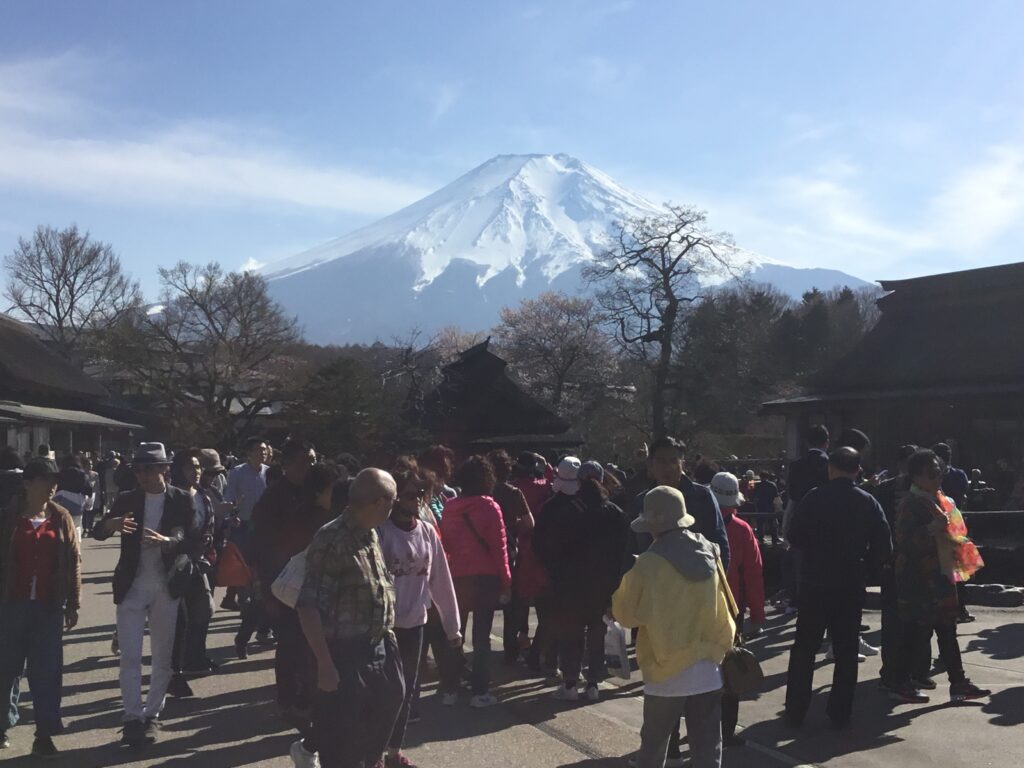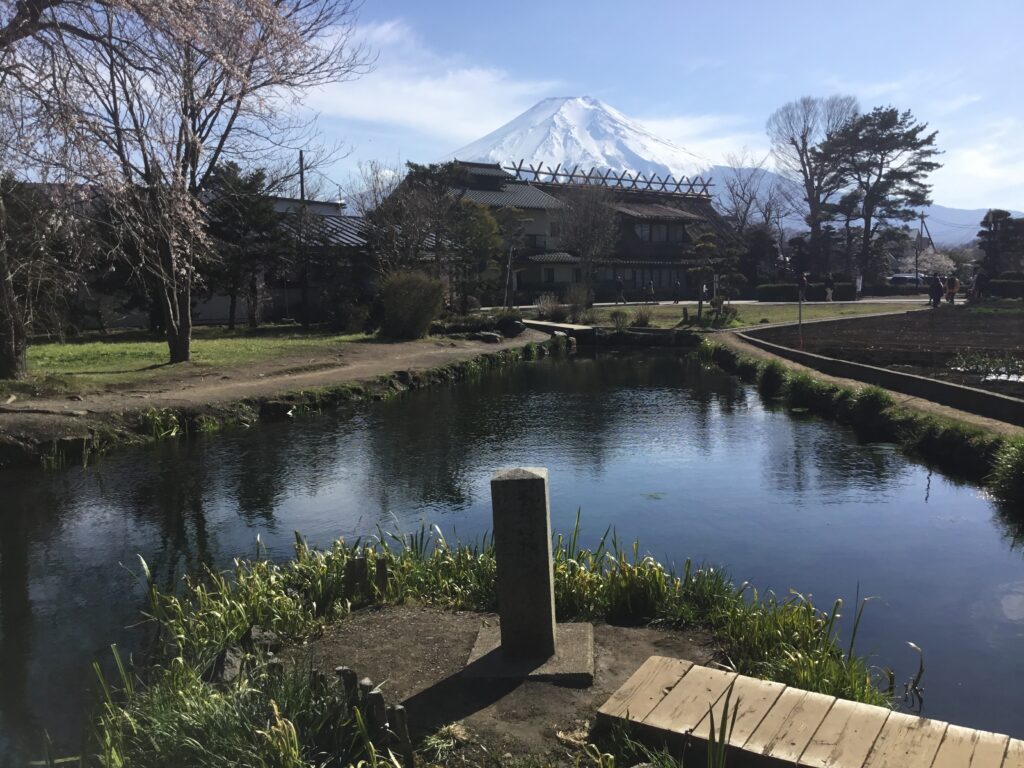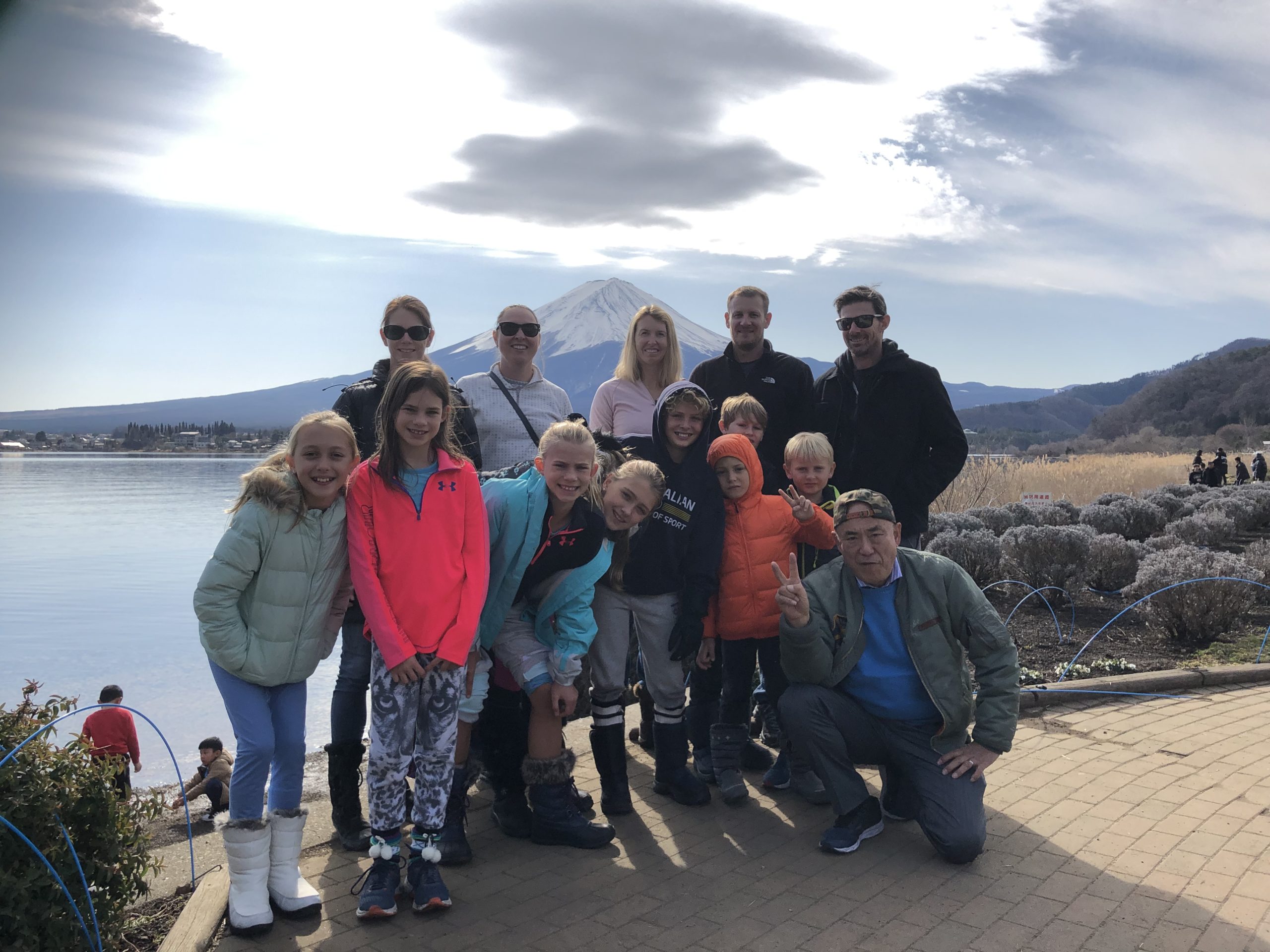Mt.Fuji whose altitude of 3776 meters is a sacred mountain which has been the object of Shinto religion from ancient period. Japanese Shinto appeared in Japan long years ago without no founder and no scripture. Ancient people had executed rice cropping as their staple food. However, Nature phenomena such as typhoon, firing, earthquake, Tsunami, lightning and so-on had prevent them to make cropping. Therefore, people had been afraid those nature and become prayed them so that Nature does not disturb them to make rice cropping. In the result, Japanese ancient people had become to believe all kind of nature such as mountain, forest, rock , river and so-on as God and that had led Japanese Shinto religion been established in Japan. You will find the Shinto shrine on the summit of Mt.Fuji. Almost all Japanese people try to climb up the summit of Mt.Fuji and pray to the Shrine, We think. The reason Mt.Fuji was registered as UNESCO World Culture Heritage is not only as the beauty of the nature but also the value of the object of Shinto religion which Japanese people have in mind and the origin of various arts occurred in Japan through it. The UNESCO World Heritage cover not only Mt.Fuji itself but also surrounding Shrines, mountain trails, Five lakes, Oshino-Hakkai and so-on.
We propose one day Mt.Fuji tour as follows.
1) Lake-Kawaguchi including Mt.Kachi-Kachi Ropeway, Ohishi park
2) Fugaku-Fuketsu
3) Oshino Hakkai
a) While you are moving from Fugatsu-Fuketsu (West side of Lake Kawaguchi) to Oshino Hakkai(East side of Lake Kawaguchi), you can see the landscape of both Lake-Saiko and Kawaguchi.
b) By moving from west , center to east of Lake Kawaguchi, you can enjoy different face of Mt.Fuji by watching with different angles.
Detail introduction
- Lake Kawaguchi
Lake- Kawaguchi is one of Fuji five lakes which are located on the foot of Mt. Fuji in the side of Yamanashi prefecture. Those five lakes are Lake-Motosu, Shojin, Saiko, Yamanaka and Kawaguchi. All those lakes was created by each original river being dammed by the eruption of Mt.Fuji and are registered as Fuji-Hakone-Izu National park. In 2011, those five lakes were named as “Fuji-Goko” and it has been registered as UNESCO World Cultural Heritage. The shore-line of Lake-Kawaguchi has the longest within the five lakes and the area is same with that of 130 numbers of Tokyo domes. From the lake, you can look the overview of the lake including Mt.Fuji.

- Ohishi park
Ohishi park is located an area around Lake Kawaguchi and familiar with the park where you can enjoy various beautiful flowers in each season. Also, this park location is the best for you to see Mt.Fuji on the opposite side of Lake Kawaguchi. The main flower of this park are lavender in early summer and Kochia/summer cypress from August to September.


- Mt.Kachi-kachi Ropeway
This Tenjyoyama mountain called “Kachi-Kachiyama” is located an area around lake-Kawaguchi which is one of Fuji five lakes. The altitude of it is 1075 meters. There are two ways for you to access the mountain, one is to climb up by walking through the hiking course spending around 40 minutes where lots of hydrangea are blooming, and another is to take Ropeway to reach the top of mountain. While riding the Ropeway, you can enjoy both beautiful landscape and walking in the sky. After you arrive at the summit, please move to a observation stage and see both Mt.Fuji, lake-Kawaguchi and South Alps in the distance.



- Ohashi bridge over Lake Kawaguchi
The Ohashi bridge is built over Lake Kawaguchi and the length of the bridge is 500meter. The view from the bridge including Mt.Fuji is excellent. To walk around the bridge is one of the best hiking course in this area and it will tale about one hour for the hiking.


- Fugaku-Fuketsu
There are infinite caves in the area of Aokigahara-sea of trees that are located on the foot of Mt.Fuji. These caves were created as an air space which had remained inside lava. The pressure occurred by cooling of flowing lava which had been created by eruption of Mt.Fuji had pushed out internal gas of lavas through the weak portion of outer surface of lavas. That created caves. This cave called Fugatsu-Fuketsu consists of a main cave as 110 meters from South to North and sub-internal path as 110meters from East to West. The width of it is 4 ~ 7 meter and the height is 2 ~ 10 meter. Inside the cave, the stiff and fine lavas are accumulated with lots of layers including lava bed. On the bottom of the cave, water gather and those are frozen in winter. The frozen statue of the water has remained even in summer due to the constant temperature of 3 degrees through a year.



- Oshino Hakkai
This site is one of the components of UNESCO World Culture Heritage of Mt.Fuji. There are eight ponds created by spring water from Mt.Fuji. In Edo era (1603 ~ 1867), these ponds used to be the places of pilgrimage for them to purify themselves before entering Mt.Fuji.



Following is the reason why the water from Mt.Fuji is excellent. Mineral water is made as water drawn from underground spring which is treated by filtration. There are several types of mineral such as Natrium, Calcium, Magnesium and so-on. Plenty of those minerals exist inside the bedrock. Those are melted into water flowing through bedrock and those water is collected on underground. Therefore, mineral water is made by the underground water in which mineral is melted. Those underground water through bedrock is purified by flowed through roots of mountains trees. Those underground water has been accumulated a little by little by spending thousand years. Therefore, the degree of clearness is incredible. Mt.Fuji is an active mountain and the lava caused by eruption from ancient period is basalt. This include plenty of the mineral of vanadium. This is the reason why the water from Mt.Fuji is tasted well.

| Car charter and a guide condition | |
| 1 | Number of tourists: 2pax – 12pax |
| 2 | Charter time and guide condition: 12 hours (including 4 hours resting time) |
